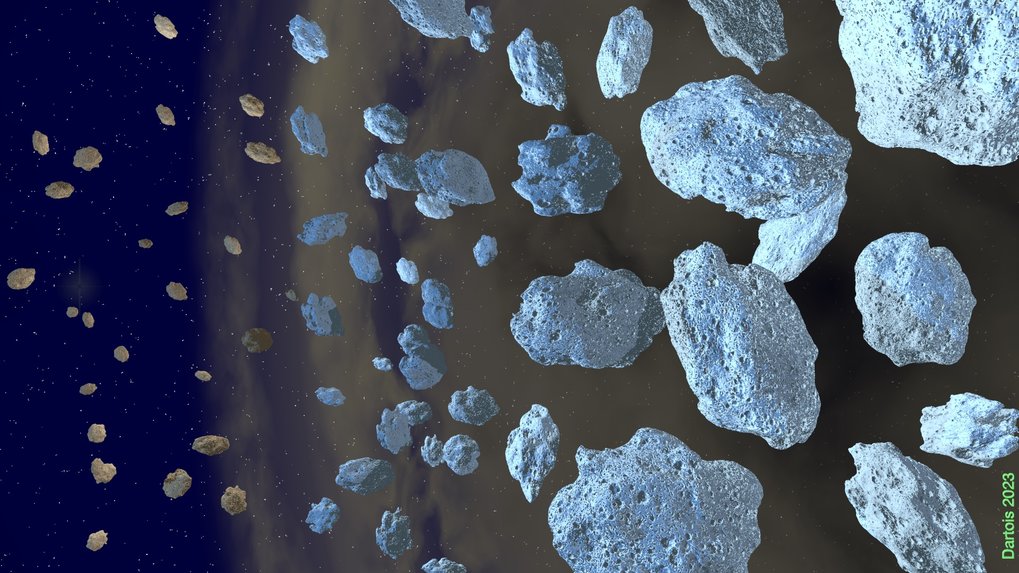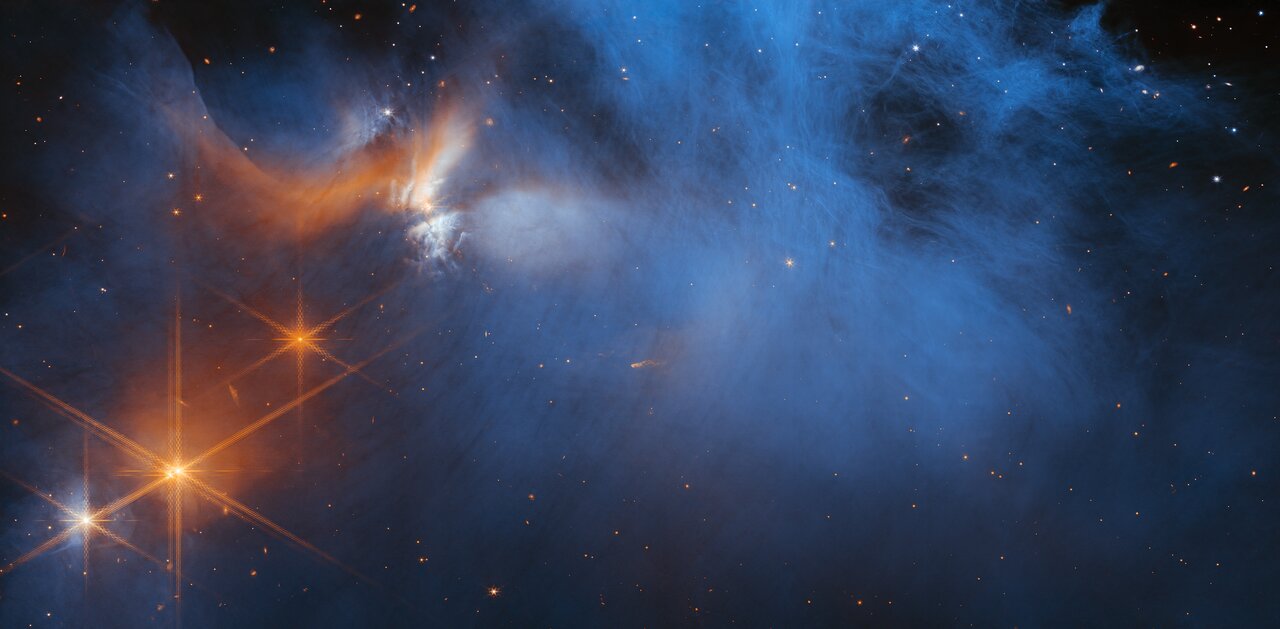James Webb Space Telescope Discovery
Clicking on each image will open the full resolution one. Try it!Clicking on "Raw images" image will yield all the relevant raw images.
Webb shines light on early interstellar grain growth
In a groundbreaking study, the James Webb Space Telescope (JWST) observed the early stages of the growth of dust grains in the dense Chamaeleon I cloud. These cold dust grains have accumulated molecular solids on their surface early in the process leading to star formation, challenging previous assumptions on where and when grain growth occurs. The findings indicate that the growth of these „icy grains” begins even before the protostellar phase. This not only sheds light on the intricacies of grain evolution before the birth of stars and planets but also poses challenges for chemical abundance determination due to the deformation of observed profiles.
 Illustration of the growth of interstellar dust grains, evolving from the ice mantle-free interstellar medium (left), acquiring first ice mantles in the cloud (centre), and increasing in size in the densest cloud phase (right). © Dartois et al. 2024
When diffuse interstellar grains grow it has a profound impact on how they interact with light, causing them to start scattering light in a significant and wavelength-selective manner. The wide range of wavelengths analysed by JWST makes it an essential tool to detect these changes imprinted upon the spectra and enabling astronomers to size grains in the micron to few microns range.
“It is challenging to interpret these distorted infrared ice feature profiles observed by Webb in such dense cloud regions, requiring an intricate combination of laboratory experiments and mathematical modelling. However, the payoff is unparalleled insights into the grain size distribution” said astronomer Emmanuel Dartois of the Molecular Science Institute of Orsay, in Orsay, France, the member of the international Ice Age team who led the newly published Webb study.
This scattering, altering spectroscopic profiles of ice bands observed in the infrared range, turns them into specific tracers of grain size changes. A detailed analysis of these profiles, conducted by observing the extinction of light from stars behind the dense Chamaeleon cloud, confirms that icy grains reach sizes on the order of microns.
“Thanks to the outstanding sensitivity of JWST, we can finally unveil detailed information on dust grains in interstellar clouds where stars and planets form,” says Paola Caselli, co-author and head of the Center for Astrochemical Studies at MPE. “Previously, grain growth has only been roughly inferred, but with these new data and the synergy between experimentalists and theoreticians, we can put stringent limits on the size of dust grains, the building blocks of planets. These dust grains do not just contain material which will coagulate into pebbles and rocks, but also volatiles such as water and organic molecules, the building blocks of prebiotic molecules, possibly representing the first steps toward life.”
Credit: Max Planck Institute.
Illustration of the growth of interstellar dust grains, evolving from the ice mantle-free interstellar medium (left), acquiring first ice mantles in the cloud (centre), and increasing in size in the densest cloud phase (right). © Dartois et al. 2024
When diffuse interstellar grains grow it has a profound impact on how they interact with light, causing them to start scattering light in a significant and wavelength-selective manner. The wide range of wavelengths analysed by JWST makes it an essential tool to detect these changes imprinted upon the spectra and enabling astronomers to size grains in the micron to few microns range.
“It is challenging to interpret these distorted infrared ice feature profiles observed by Webb in such dense cloud regions, requiring an intricate combination of laboratory experiments and mathematical modelling. However, the payoff is unparalleled insights into the grain size distribution” said astronomer Emmanuel Dartois of the Molecular Science Institute of Orsay, in Orsay, France, the member of the international Ice Age team who led the newly published Webb study.
This scattering, altering spectroscopic profiles of ice bands observed in the infrared range, turns them into specific tracers of grain size changes. A detailed analysis of these profiles, conducted by observing the extinction of light from stars behind the dense Chamaeleon cloud, confirms that icy grains reach sizes on the order of microns.
“Thanks to the outstanding sensitivity of JWST, we can finally unveil detailed information on dust grains in interstellar clouds where stars and planets form,” says Paola Caselli, co-author and head of the Center for Astrochemical Studies at MPE. “Previously, grain growth has only been roughly inferred, but with these new data and the synergy between experimentalists and theoreticians, we can put stringent limits on the size of dust grains, the building blocks of planets. These dust grains do not just contain material which will coagulate into pebbles and rocks, but also volatiles such as water and organic molecules, the building blocks of prebiotic molecules, possibly representing the first steps toward life.”
Credit: Max Planck Institute.
 Chameleon I discovery page
Chameleon I discovery page